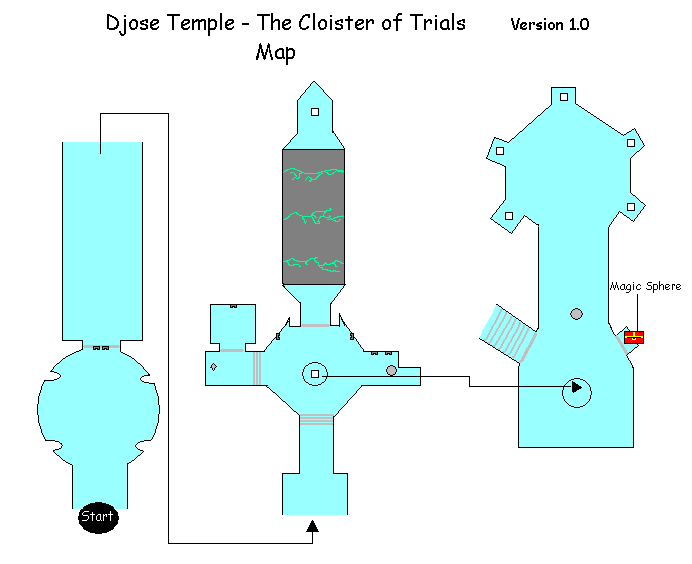Last updated on October 31, 2012
Video games have a unique power in their interactivity: they can make you feel like you’re accomplished something, even though all you were really doing was pressing buttons on a controller. Some games make you feel powerful and skillful as you dodge enemy attacks and return fire with grace and ease. Others make you feel incredibly smart for solving a particular puzzle that, with the augmentation of three dimensions, barely made a lick of sense until you thought about it a while. Games are certainly unique in that aspect.
However, they can also make you feel quite dumb and stupid for not being able to surpass some obstacles without outside help. This is especially true when you return to a game 10 months after playing it, only to find out that you don’t even remember the rules of said game, let alone remembering anything that could help you succeed. These are weird moments – if you don’t remember the rules to a puzzle, how can you implement every possible combination or strategy? Personal experience tells me that this is INCREDIBLY frustrating, and not entirely my fault.
So it was that, in returning to Final Fantasy X, I found myself stumped on the Djose Temple puzzle. Final Fantasy X has different rules than the real world – oh, did you know that magical spheres can retain energy and power up objects and doors? Sorry you didn’t know that! Should you be lighting the glyph in the center of the room, or is it merely a ploy? Seriously bizarre. I was stuck on the trial for a good half hour not knowing what to do. I didn’t want to give up, but frankly my brain wasn’t working. Furthermore, I didn’t even know you could MOVE the pedestal; playing Prince of Persia beforehand definitely wasn’t a great idea (different rules, natch). You can put two spheres in one pedestal? Why didn’t I think of that?!

The final solution was something akin to a fever dream: charge up two orbs by placing two orbs connecting to a magic green glowing thing, then place one orb onto the movable pedestal (which I didn’t know you could move). Move the pedestal under the pedestal on the ceiling will charge the orb in the pedestal. Then, place charge orb into the slot unlocking the door to the next room.
Then, you see the electricity pit. How the heck am I supposed to cross this thing? Well, how else? Place magic spheres in the pedestal, then push it over the edge. What? Oh, forgot to mention, apparently magic Djose spheres make stone pedestals float over electricity – totally logical. From there, it’s relatively simple, but COME ON – none of this makes any sense. Surely, it’s partly my fault for not remembering anything, but I honestly believed I could just keep moving stuff around until said puzzle solved itself. Well, Tidus showed me otherwise.
Adventure games do much the same thing to me. It’s not necessarily trying to figure out the puzzle; rather, you’re trying to figure out what the developers want to do. Think of it this way: a developer, when making a puzzle, can either go the generic route or the complicated route. In the first, everyone can perceive stuff like box puzzles or pressing switches in the right order. Even Devil May Cry 3’s little riddle puzzle (which is basically the Riddle of the Sphinx from the Oedipus Cycle) makes sense if you’re thinking about what the symbols on each door means relative to “What walks on four legs in the morning, two legs in the afternoon, three legs in the evening, and no legs at night?” Stock puzzles aren’t bad; they give players enough incentive to solve them (i.e., get to the next action part) without totally stumping you. Still, you don’t get much satisfaction from moving blocks around or just stumbling until you inadvertently progress (as happened to me in DMC3, granted, on my first playthrough).
However, there are some that have an entirely too long list of sequential puzzles that, really, require a great deal of observation, logical thought processes, luck, and divining the will of the developer. According to Kirk Hamilton of Kotaku, Gabriel Knight 3 has an exceedingly convoluted and bizarre puzzle:
In Gabriel Knight 3, Gabriel needs to get a motorbike to continue the story. But in order to get it, he has to disguise himself as long-suffering Detective Mosley. And in order to do THAT, he has to make a mustache out of cat-hair. Though Mosley doesn’t have a mustache… so Gabriel will also have to draw a mustache onto Mosley’s licence so that his cat-mustache-using disguise looks like Mosley’s ID.
Well, it’s not quite that simple because EACH FUNCTION of the game has to be done in order to achieve said result. So:
USE the piece of masking tape on the shed door hole (behind church).
USE the spray bottle on the cat (behind church).
PICK UP candy from the bowl on the desk (hotel lobby – you can pick this up as early as day 1, 10:00 am).
TALK to Mosely about his passport (Mosely’s room).
USE the candy on the table under the painting depicting the street scene (hotel second floor).
PUSH the room buzzer for room #33 (hotel lobby).
PICK UP the passport from Mosely’s pocket as he eats the candy you left on the table (hotel second floor).
PICK UP the gold coat (Mosely’s room).
PICK UP the black pen from the desk while Jean is away (hotel lobby – you can pick this up as early as day 1, 10:00 am).
PICK UP the packet of syrup from the buffet table (hotel dining room).
USE the black pen on the passport (inventory).
USE the black fibres on the syrup to create a mustache (inventory).
USE the cap on the gold coat (inventory).
USE the mustache on the gold coat (inventory)
USE the disguise on Gabriel (moped rental area).
Honestly, I’m not sure what I would do with myself in this case. I’m fine with getting stumped in a game; it’s a great challenge, and that “EUREKA!” moment makes it all the more sweet. There’s a balance there, though, that many adventure games didn’t, and still don’t, exhibit. I may know the solution, but not quite the chain of events leading to that solution exactly. I may skip a step by accident and remain stuck for another hour or so. The solution becomes SO obvious, but the hoops the developer forces upon me aren’t fun at all. When a puzzle to make a subway train run again involves a rubber duck and an electrified key, you know something’s gone wrong.
Still, video games aren’t always supposed to be “fun”; rather, they’re filled to the brim with some kind of arbitrary challenge, from reflexes to brain teasers of the worst sort. Of course, you wonder why gamers put up with some of these hilarious missteps at all. Well, there’s a joy in challenges that makes sense from a Christian standpoint. James 1 tells us so:
2 Count it all joy, my brothers, when you meet trials of various kinds, 3 for you know that the testing of your faithproduces steadfastness. 4 And let steadfastness have its full effect, that you may be perfect and complete, lacking in nothing.
Joy is a very strong word. The Holman Bible Dictionary notes that joy is “The happy state that results from knowing and serving God. A number of Greek and Hebrew words are used in the Bible to convey the ideas of joy and rejoicing. We have the same situation in English with such nearly synonymous words as joy, happiness, pleasure, delight, gladness, merriment, felicity, and enjoyment.” Wait, trials and difficulties equate to enjoyment? What gives?
Allow me a theory. If everything WAS the same all the time, there wouldn’t be a point of comparison. If life offered no challenges, then everything would remain the same, forever. If not unfulfilling, then such a life would surely be boring. However, trials and tribulations give everyone a point of comparison; without the need to brush against some oppositional force, would you truly have the motivation to become a better person? In the Christian case, would you be more likely to become more Christ-like if sin wasn’t an opposing force? Video games make no sense without a conflict of some sort, a task to perform, or something to overcome? Jesus has overcome the world; so should we also strive to overcome.
So it is in video games, so it is in life.

